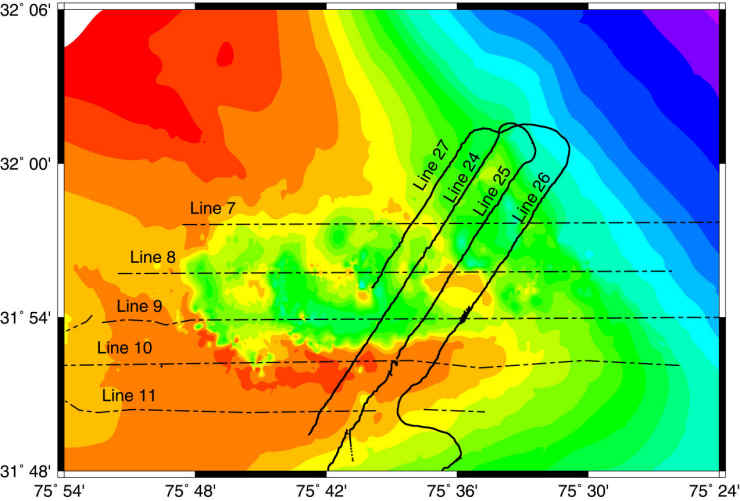| Description |
This CD-ROM contains copies of the navigation and deep-towed chirp subbottom data collected aboard the R/V Cape Hatteras,on cruises 92023 and 95023 in 1992 and 1995 respectively. This CD-ROM is (Compact Disc-Read Only Memory UDF (Universal Disc Format) CD-ROM Standard (ISO 9660 equivalent). The HTML documentation is written utilizing some HTML 4.0 enhancements. The disk should be viewable by all WWW browsers but may not properly format on some older WWW browsers. Also, some links to USGS collaborators and other agencies are available on this CD-ROM. These links are only accessible if access to the Internet is available during browsing of the CD-ROM. On cruise 92023, 58 km of deep-towed chirp data were recorded on 4 lines and broken into a total of 8 files. 78 square kilometers of sidescan mosaic and approximately 1000 km of air gun single channel seismic reflection data were recorded as well but are not achived on this report. On cruise 95023, 100km of deep- towed chirp data were recorded on 5 lines and broken into 18 files. 152 square kilometers of sidescan mosaic and 244.3 km of GI gun single channel seismic reflection were also recorded but are not archived on this report. The archived Chirp subbottom data are in standard Society of Exploration Geologists (SEG) SEG-Y format (Barry and others, 1975) and may be downloaded for processing with software such as Seismic Unix or SIOSEIS. The subbottom data were recorded on the ISIS data acquisition system in QMIPS format. Chirp subbottom channel extracted from raw QMIPS format sonar files and converted to 16-bit Int. SEG-Y format using the program QMIPSTOSEGY. Even though the data are in SEG-Y format, it is not the conventional time series data (e.g. voltages or pressures), but rather instantaneous amplitude or envelope detected and therefore all of the amplitudes are positive (though not simply rectified). [More]
|
